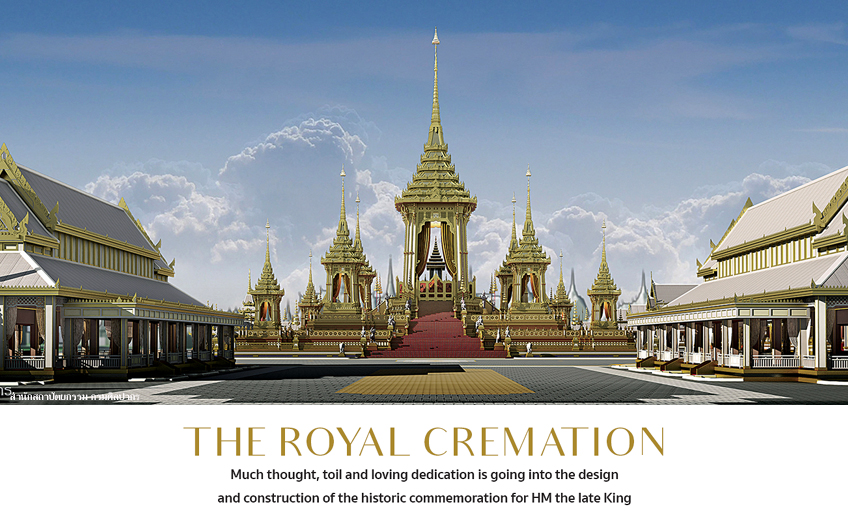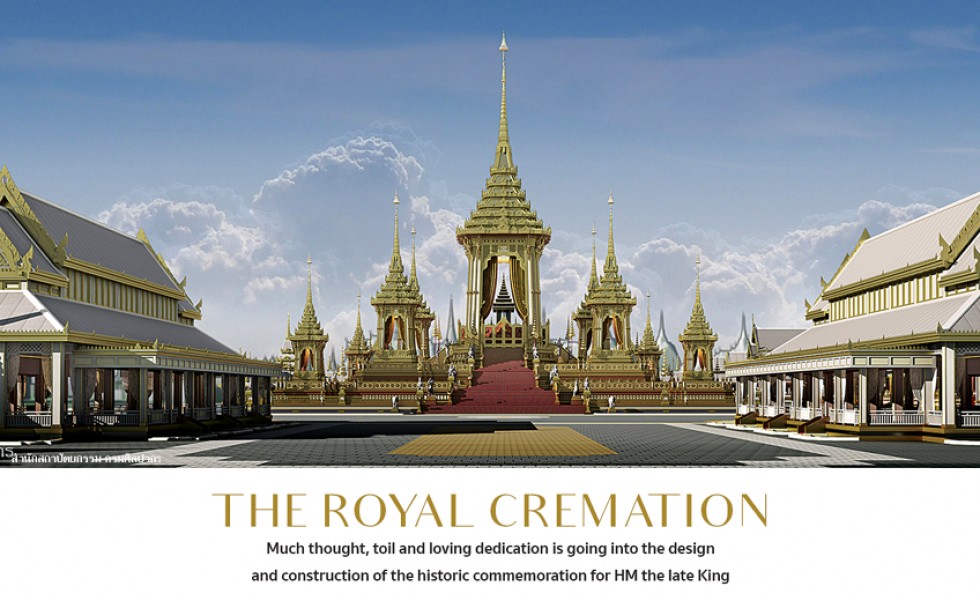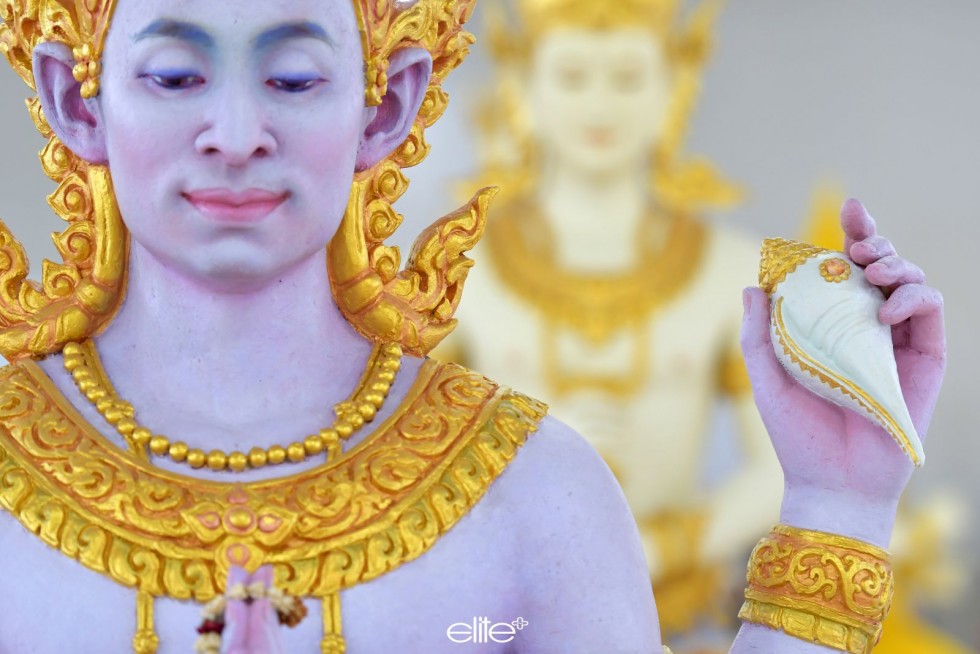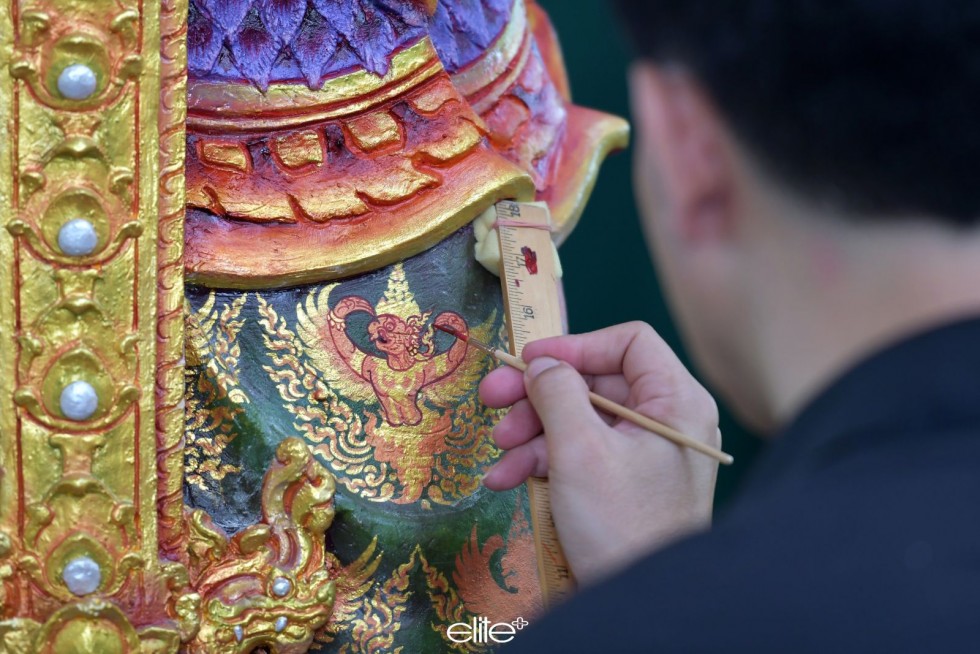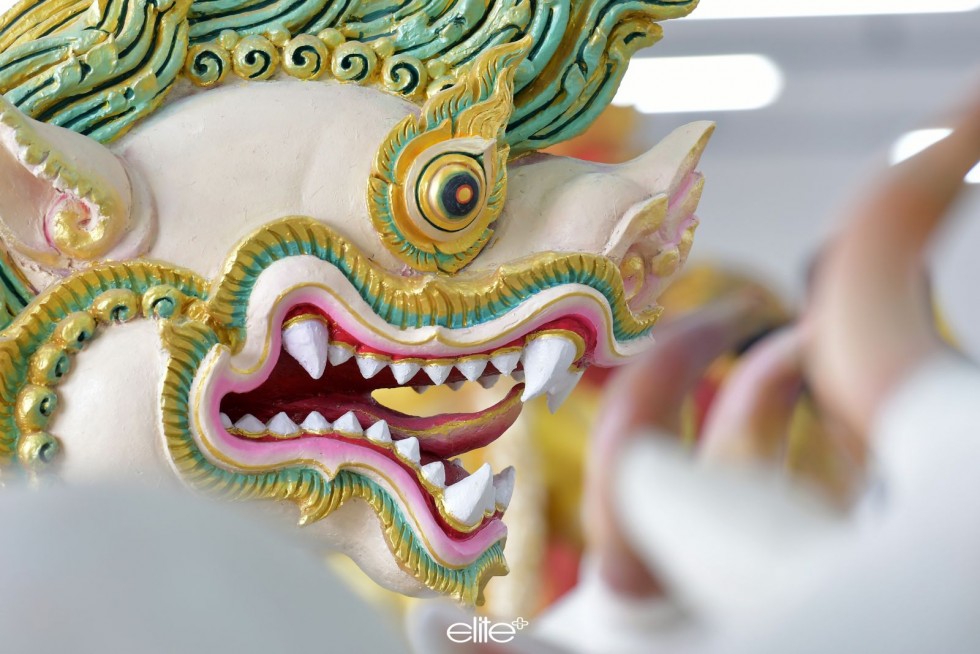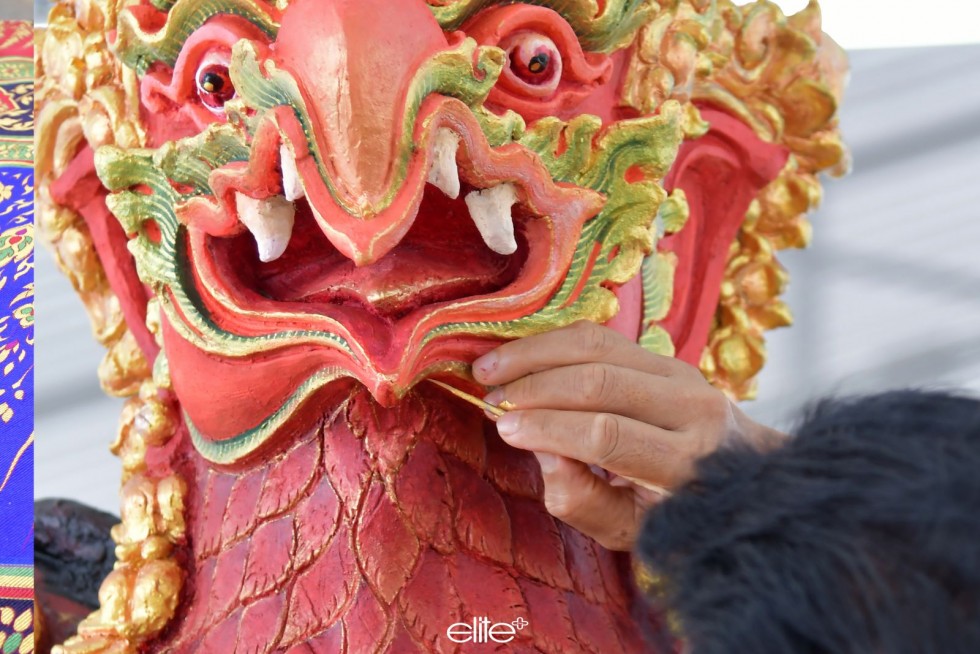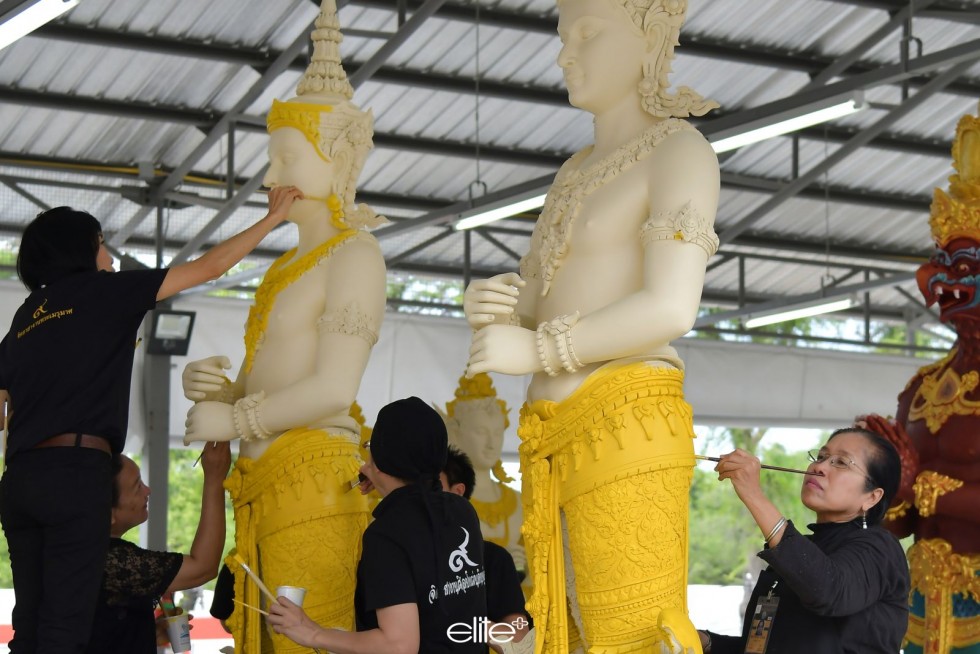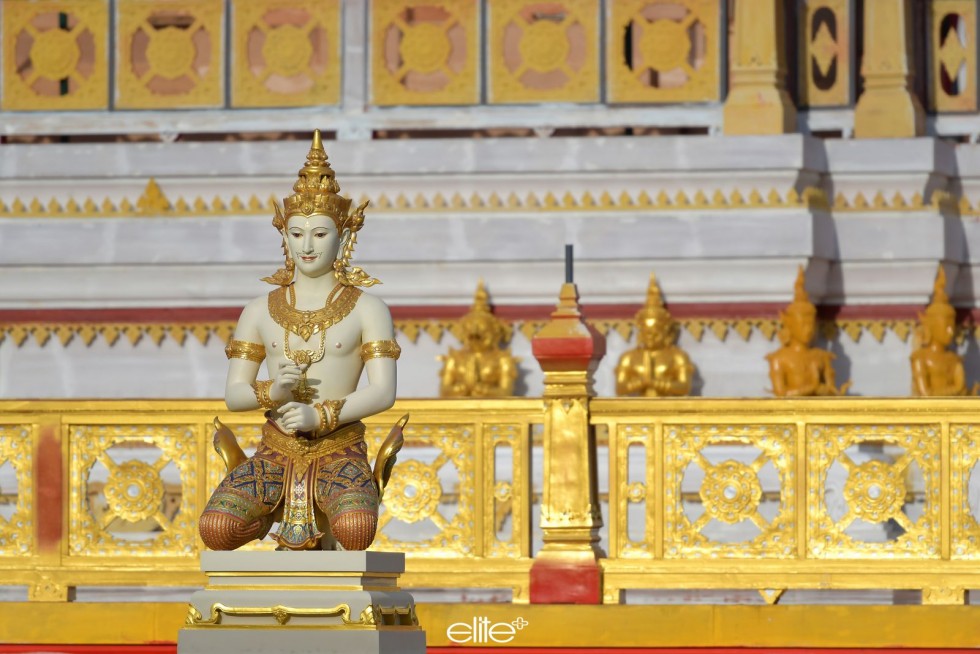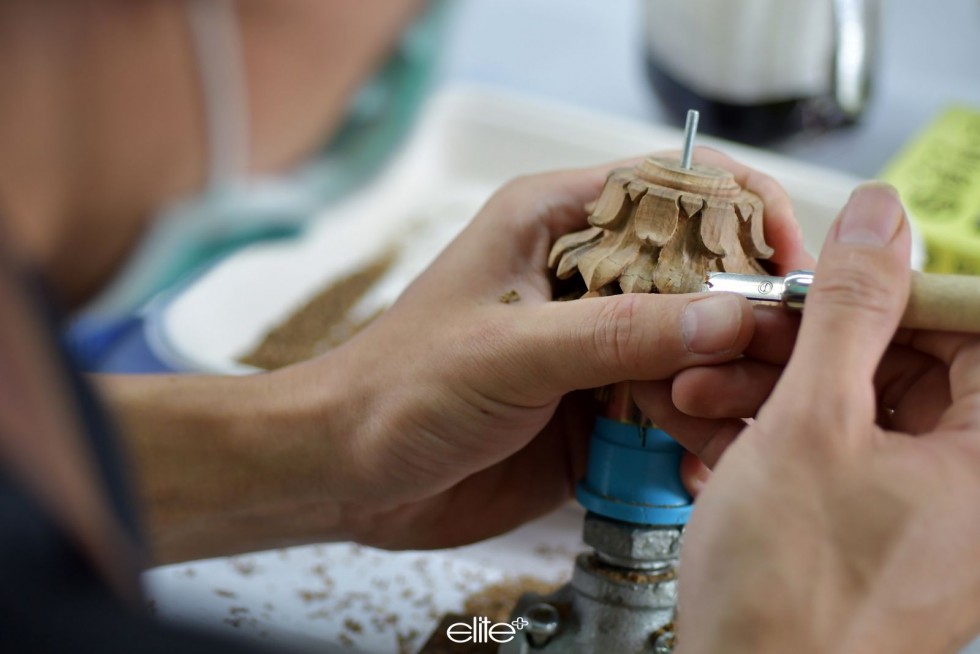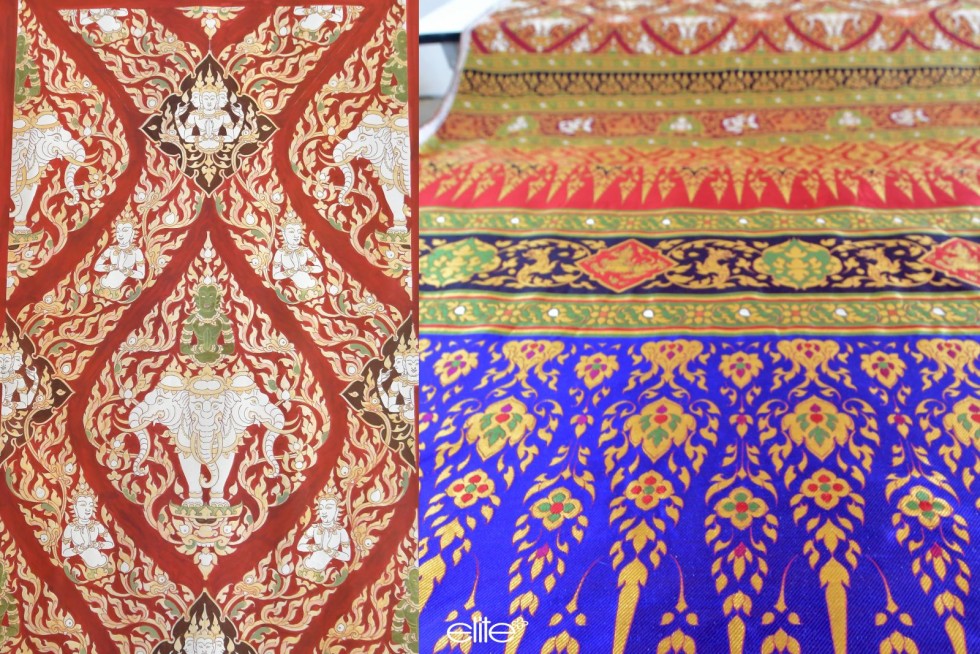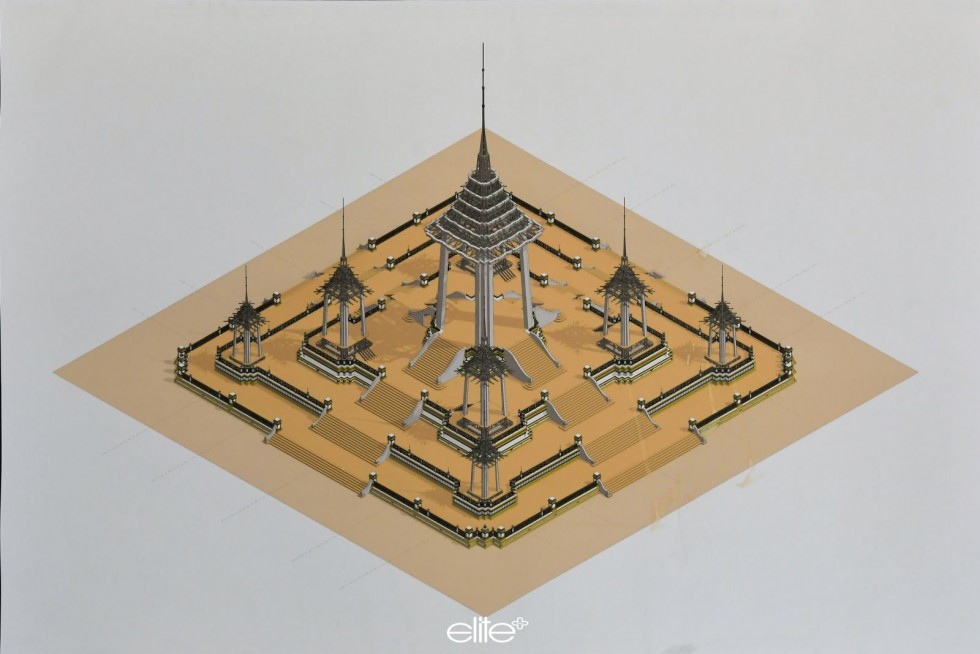Sanam Luang is no ordinary public ground; it has long served as a public space for state and royal functions. The role of this space will be prominent and unique in the royal cremation of His Majesty the late King Bhumibol Adulyadej, taking place from October 25 to 29.
The concept of building a royal crematorium at Sanam Luang may be unfamiliar to foreigners not used to funeral rites held in temples or funeral houses. Yet the rules for funeral rites for members of the Thai Royal Family are unique. The cremation of royals from the rank of Chao Fa up or those whom the king has assigned individually will be conducted in a royal crematorium located “in the middle of the capital”.
Royal crematoria, or Phra Merumat, have been built in open spaces since the Ayutthaya Period. Historical evidence indicates that early royal crematoria (sometimes referred to as royal pyres) were placed at open spaces in front of Chakrawat Paichayon Hall. When Bangkok became the capital over two centuries ago, the ground in front of the Royal Palace was used for the location of royal crematoria.
In early days, this lawn was officially called Thung Phra Men, or the royal cremation ground, until King Rama IV had the name changed into Sanam Luang.
The construction of the royal pyre has been a big event and a labour intensive endeavour because it is a showcase of supreme quality Thai architecture. In former times, large pieces of wood had to be hauled by elephant to Bangkok. The size of the royal crematorium structure was in fact much larger then, reaching as high as the Dusit Thani Hotel.
The size was scaled down for the royal crematorium of the late King Rama V, as the royal wish of the King himself was that his royal pyre be smaller. In cultural and religious dimensions, the design and image of Phra Merumat reflect beliefs of Buddhism and Brahmanism that influence the institution of the Thai monarchy and shape collective beliefs.
The royal funeral ceremony and royal cremation reflect the unique, symbiotic relationship between Thai people and the monarchy. HM the late King Bhumibol Adulyadej was highly revered by the people, and the royal funeral ceremony and cremation become the means for Thais to honour, show love for and respect the late King, as part of a gesture to bid final farewell.
In Thai culture, the monarch is not just a ruler but revered as a god king. In Buddhist beliefs, the king is a bodhisattva, who will be reincarnated as a future Buddha. For Hindu-influenced Brahman doctrines, the king is an avatar, a reincarnated version of mighty Hindu gods.
“In Thai beliefs, the king was born as an avatar of a god who descended to earth,” Anandha Chuchoti, director-general of the Fine Arts Department (FAD) told Elite+ in an exclusive interview. “After passing away, the king will return to live in heaven as a god. The royal crematorium is designed and built to reflect the belief that the king will return to live at Phra Sumen, heaven. The royal crematorium thus will reflect the image of heaven where the god king will live after leaving the earth.”
Mr Anandha’s office overlooks the ongoing construction in the Sanam Luang area. The construction of Phra Merumat and related structures is expected to be completed by the end of September.
The FAD has experience with this task. The FAD and artisans are following traditional beliefs, although modern technology plays a significant role. Computer models are used and it is the first time pre-fabricated materials – steel structures – will be used; in old days only wood was used. Computer modelling makes it possible to build parts outside and transport them to Sanam Luang, where construction cranes help to assemble the parts. In former times, construction workers would climb up to put the wooden parts altogether. Unlike previous royal crematoria that only used wood, this royal pyre is made of wood and steel that will allow the structure to accommodate more than 7,000 people.
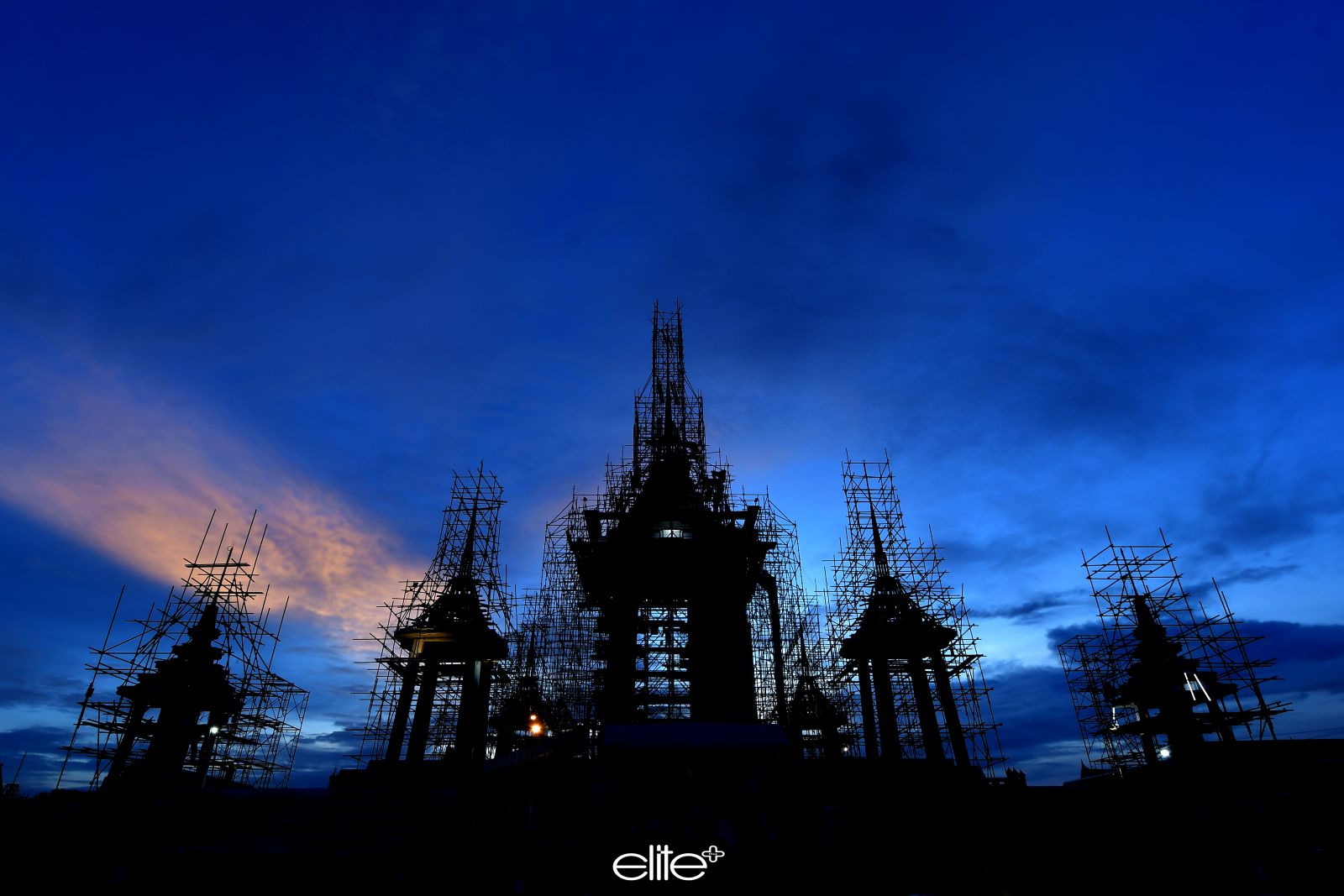
Construction officially commenced in February. However, that FAD first met to discuss the construction on October 14, a day after HM the late King passed way. The FAD director-general remembers every detail that day.
“A sea of people in black dress, with tears in their eyes, gathered at Sanam Luang as the royal funeral cortège gradually moved from Siriraj Hospital to Dusit Maha Prasat Throne Hall in the Royal Palace near Sanam Luang,” said Mr Anandha. “We were deeply sad and some of us cried, but I had to call the meeting right away as we knew the construction of Phra Merumat had to start right away.
“This task of constructing the royal crematorium was a duty none of us wanted to see happen because we loved the late King Bhumibol so much and never wanted the late king to leave us. But we know it is the department’s responsibility and the work must be flawless, utter perfection that befits the honour of our late King Bhumibol.
The royal funeral ceremony and construction of the royal crematorium are growing into a modern historical event. Local media are reporting details about the design and construction, and the background of the tradition and history of Thai traditional arts, not to mention the fact that millions of people came to pay their respects at HM the late King’s funeral at Dusit Maha Prasat Throne Hall. Another historic phenomenon is the thousands of volunteers wanting to be part of the event, helping FAD artisans cut paper, draw and do simple sculpture work or menial tasks such as serving food or making coffee. Volunteering for HM the late King’s Royal Funeral is their way to show love and respect in their final farewell to HM the late King Bhumibol.
Volunteering and public participation in the royal funeral rites and royal cremation was impossible in former times. Before the reign of King Rama V, the general public was not given any opportunity to participate in the royal funeral ceremony. The public would learn from the royal announcement, then people across the country would go into mourning. Among mourning gestures was shaving one’s head. Needless to say, they were not allowed to access or come around the royal cremation area. They would only know once the royal cremation process was finished.
The public was given a first chance to participate during the royal funeral ceremony of King Rama V. Prince Damrong initiated a change to the royal tradition of funeral, allowing the public to pay respects to the King’s body. Since then, the royal court has granted more opportunities for the general public to participate in the royal funeral.
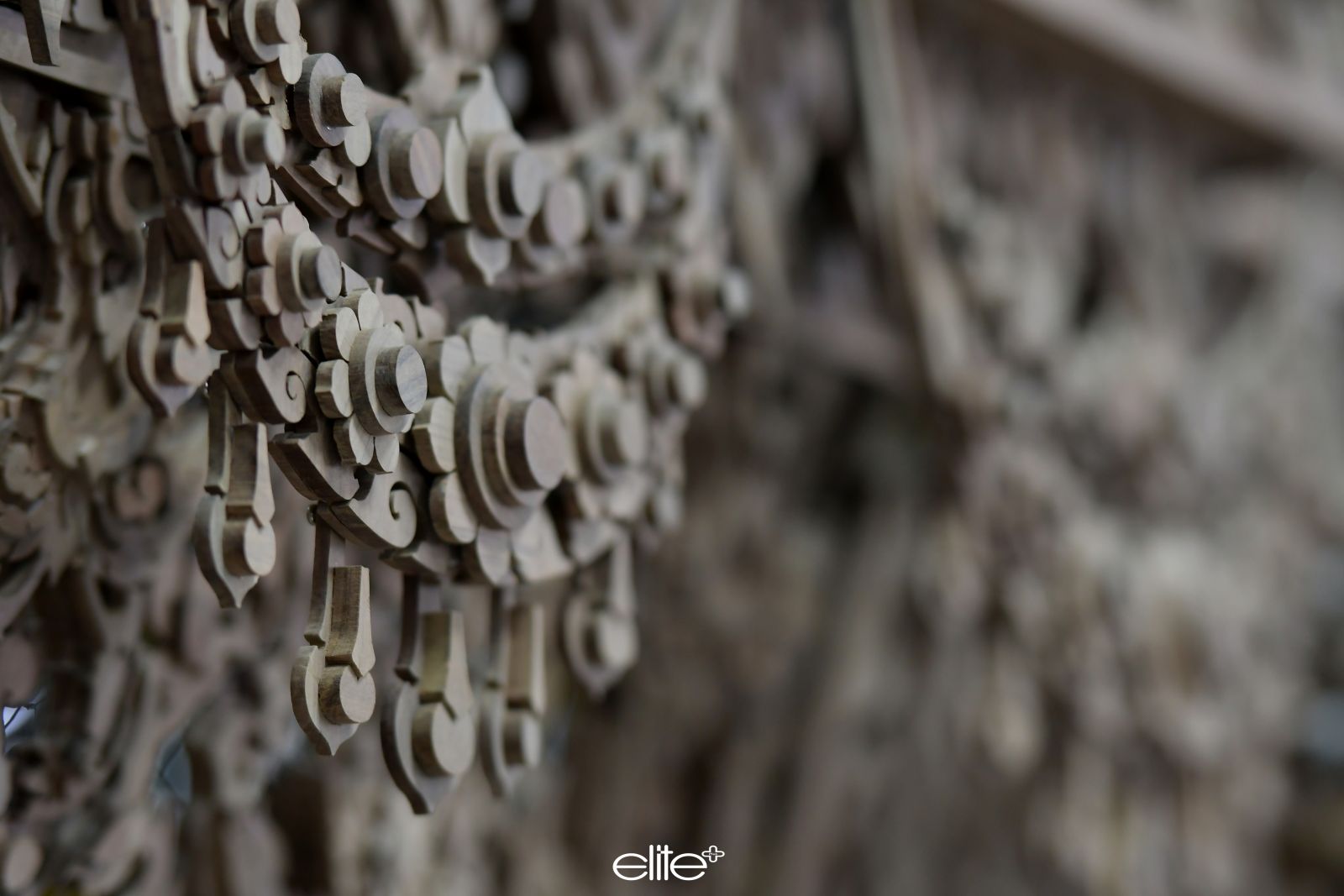
A Royal Funeral that Unites
Another historic aspect in the royal cremation of HM the late King Bhumibol is the nationwide campaign to create dok mai chan – artificial sandalwood flowers, also known as cremation flowers.
This volunteer activity was initiated by HM the King Maha Vajiralongkorn Bodindradebayavarangkun.
In former times, dok mai chan had to be made from real sandalwood, as the wood gives off a distinct “celestial” aroma, believed to help transport the soul to heaven. Now, however, other materials such as paper may be used to replace the increasingly rare sandalwood, and this nationwide campaign also makes use of artificial dok mai chan. The campaign has drawn much public attention and become a widespread volunteer activity. Since May, when the campaign started, people joined groups to learn to make dok mai chan. The flower-making sessions have been held at government buildings, schools and universities as well as public and private buildings.
Millions of dok mai chan will be delivered to provincial and local administrations. For example, the Bangkok Metropolitan Administration will reportedly create 101 pavilions around the ceremony grounds where people can lay cremation flowers. Seventy-six pavilions will be built, one in each province, as well as 800 smaller ones in districts, so everyone can have chance to participate in the once-in-a-lifetime ceremony.
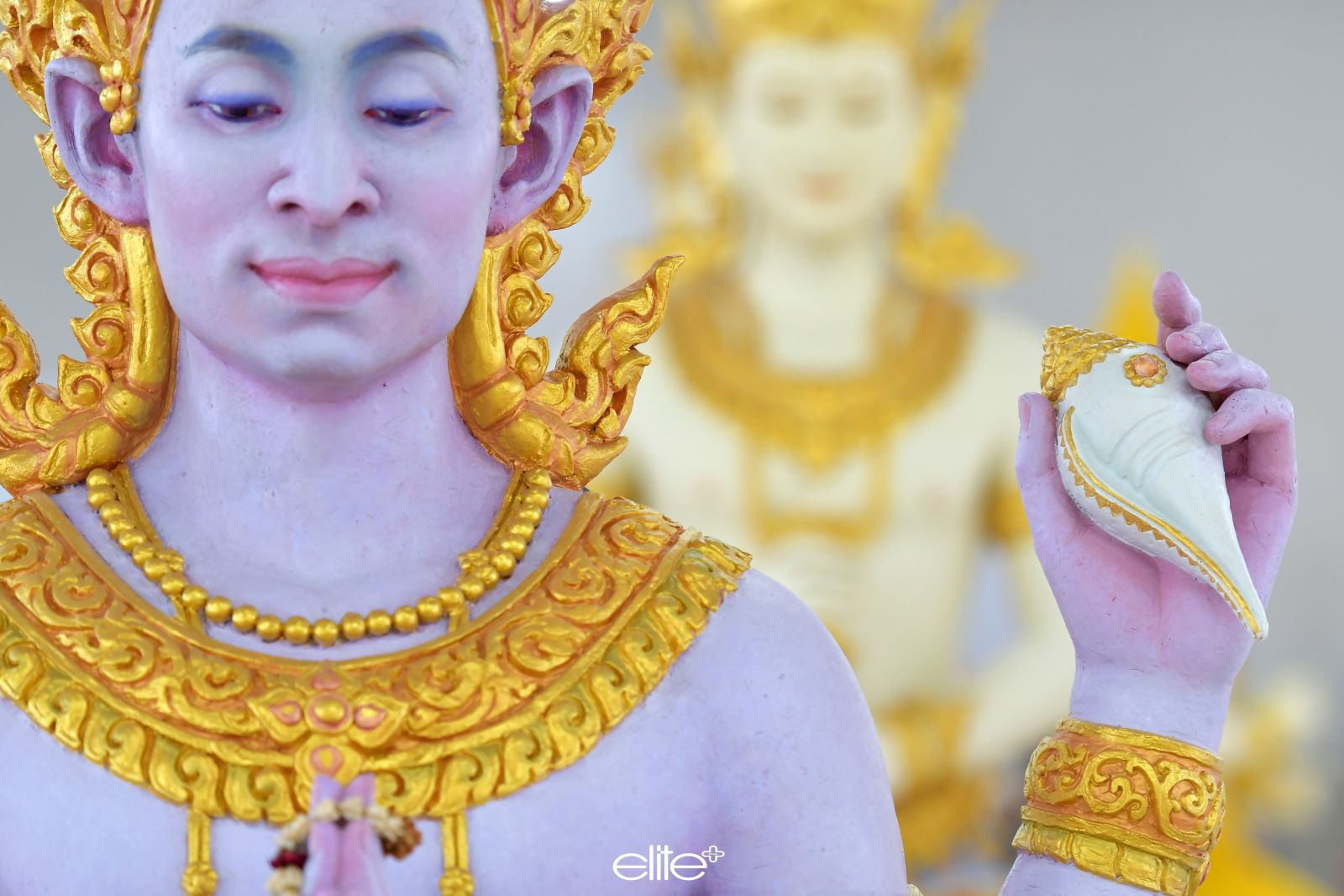
The Ceremony
It has been announced that the royal cremation will take place from October 25 to 29. It usually takes several days to complete royal cremation rites. The first day reportedly starts with royal merit-making. The next day, the royal urn will be carried by royal chariot in a march around the Grand Palace, before being placed in the royal pyre where the royal cremation is to be conducted in the evening. On the following day, HM the King will lead the ceremony to collect the royal relics, which will be enshrined at the Chakri Maha Prasat Throne Hall and royal ashes to be contained under the base of the main Buddha image at temples associated with HM the King’s reign – in this case, Wat Bowonniwet Vihara and Wat Ratchabophit.
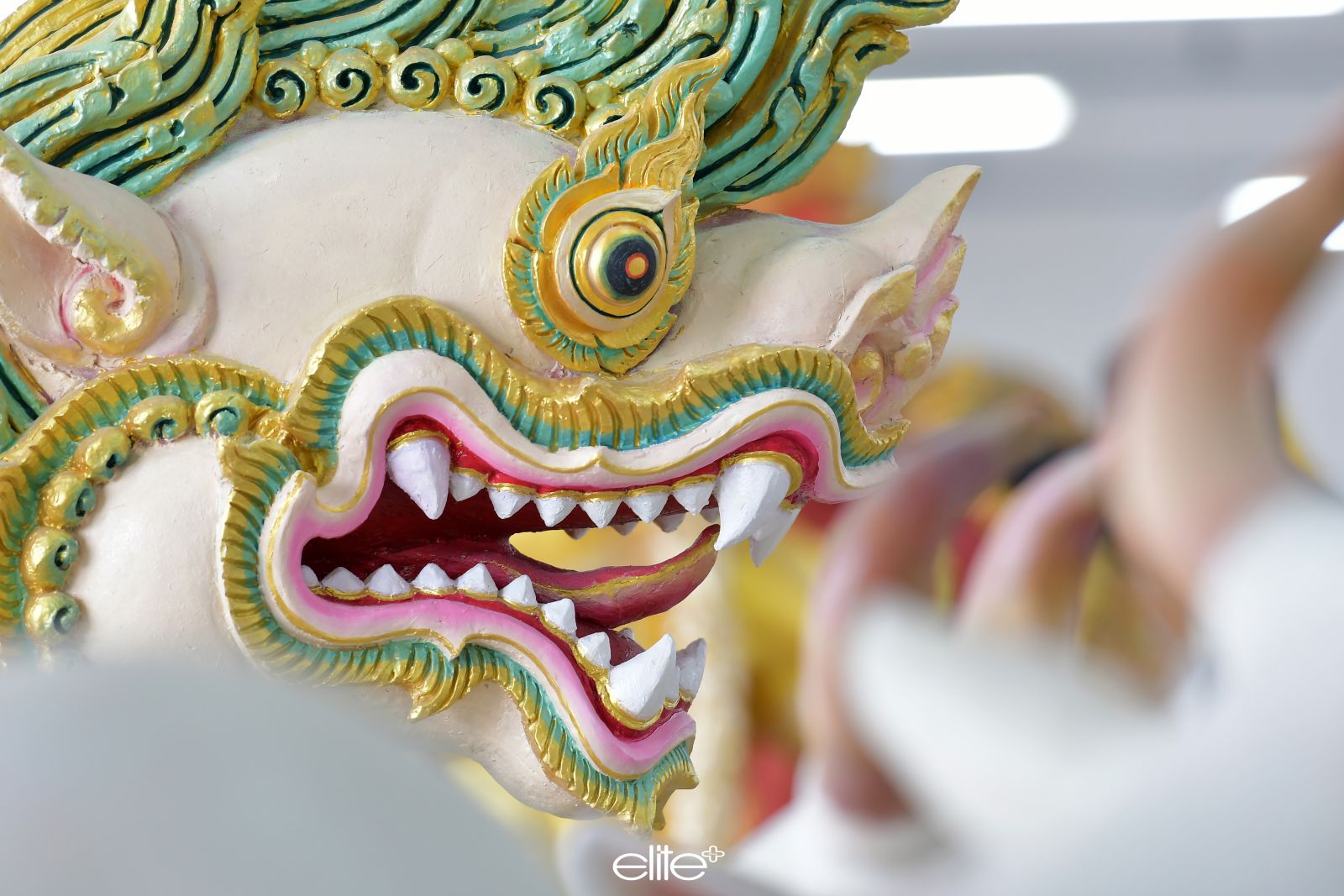
The Days After
Elaborate and breathtakingly beautiful, the royal pyre and related structures are temporary, and according to tradition will be dismantled after the end of the royal cremation. Usually materials will be donated to temples or placed in museums.
A case in point is the royal pyre of Prince Siriraj, son of King Rama V, who in 1887 died of dysentery at the age of 18 months. The wood was reused to build Siriraj Hospital.
For the forthcoming royal cremation, the public will be given a chance to visit the royal pyre for around one month, then the FAD will start dismantling the structure at the end of November. The royal pyre will be reassembled and placed at a special museum, the King Rama IX National Archive in Khlong Luang District in Pathum Thani Province.
ROYAL PYRE: MOUNT SUMERU
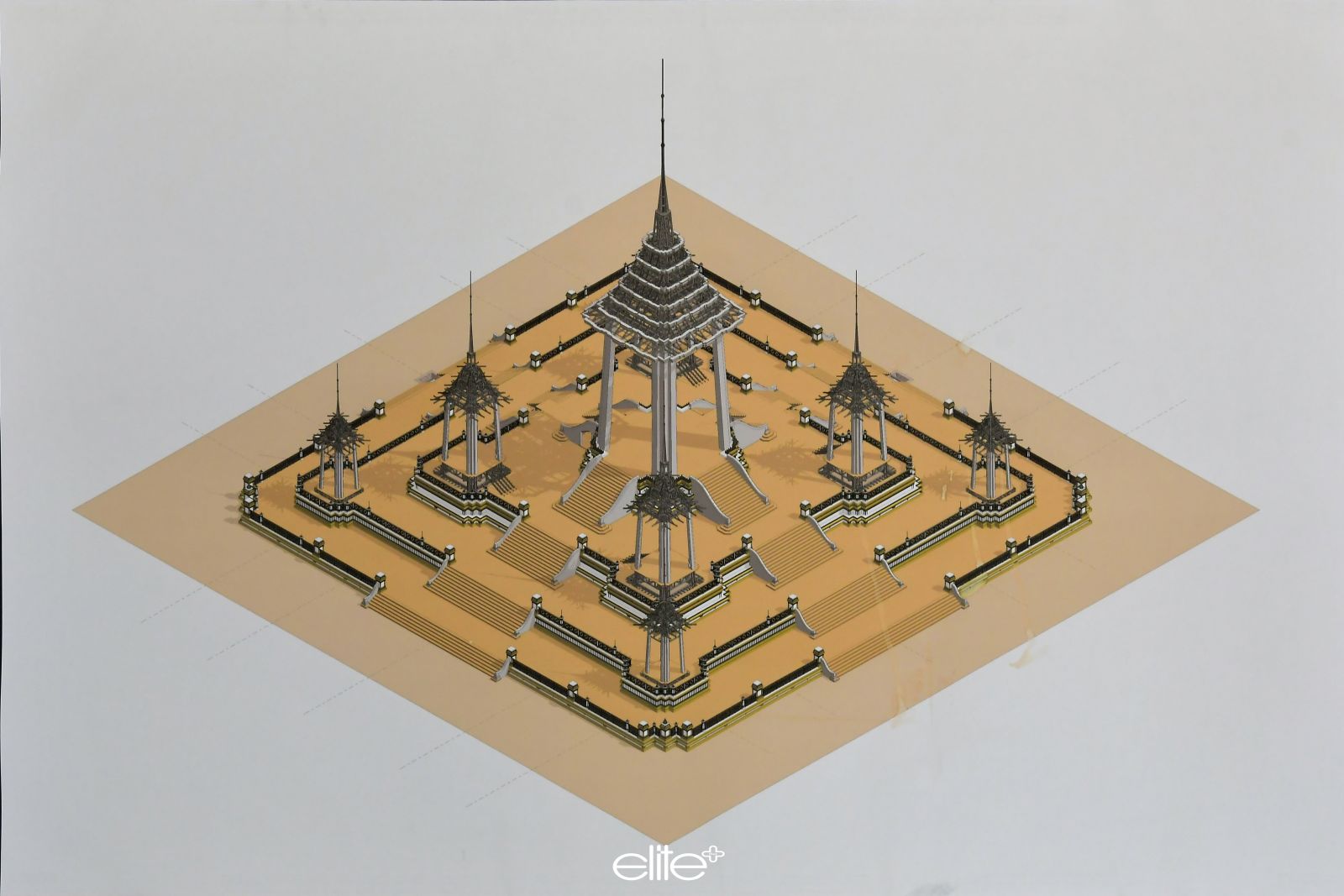
The design and construction of the royal pyre relates to the reproduction of Mount Sumeru, the centre of the universe according to Hindu belief, the heaven where the divine spirit of the late King will return to live. In traditional belief, Mount Sumeru is surrounded by landscape features such as Anodhad, the heavenly pond, and Himmapan, the heavenly garden, with deities and mythic creatures. Royal pyre-related structures, decorations and sculptures are created to reflect this vision and concept. The royal crematorium for His Majesty the late King can only be designed in the shape of a busabok, featuring a tall structure with a multi-tier pointed roof.
Kokiart Thongphud, architect at the FAD who designed the royal pyre for HM the late King’s royal cremation, is following these rules. Mr Kokiart studied previous designs of royal pyres and the Trai Phum of Buddhist literature to understand the breadth and depth of royal crematorium structures and underlying concepts. According to a June interview in the Bangkok Post, Mr Kokiart drew drafts for the royal pyre on the night of October 13 and submitted them the following morning. The draft chosen by Her Royal
Highness Princess Maha Chakri Sirindhorn depicts the royal crematorium with nine busabok, each of them with an independent look. Of the nine, the main royal pyre is largest and stands top and centre of all the structures. The tip is a white, nine-tiered umbrella peak. It has no wall and will be decorated with a royal curtain and splendidly painted partitions.
Royal March to Heaven
Apart from the royal pyre, another major element in the royal cremation is the royal chariots and vehicles bringing the royal urn from Dusit Maha Prasat Throne Hall at the Grand Palace to the royal crematorium in Sanam Luang, and subsequently bring the royal relics and ashes after the cremation back to the Grand Palace, according to the FAD publication Royal Chariots and Royal Vehicles. Soldiers dressed in traditional costumes will be assigned to pull these royal chariots and vehicles.
Unlike the royal pyre, royal chariots used for the event, including Maha Pichai Ratcharot (carrier of the royal urn), have been built since the reign of King Rama I, or around two centuries ago. They have been used in previous royal cremations and kept at the National Museum in Bangkok near Sanam Luang. There are traditional rules and beliefs surrounding the use and maintenance of royal chariots. Among them is that restorations can only be made when there is a royal cremation. Another is that every time the royal chariot is used, the FAD needs to break the surrounding wall of the national museum for the royal chariots to pass, and rebuild it once the royal chariots have returned after the royal cremation.
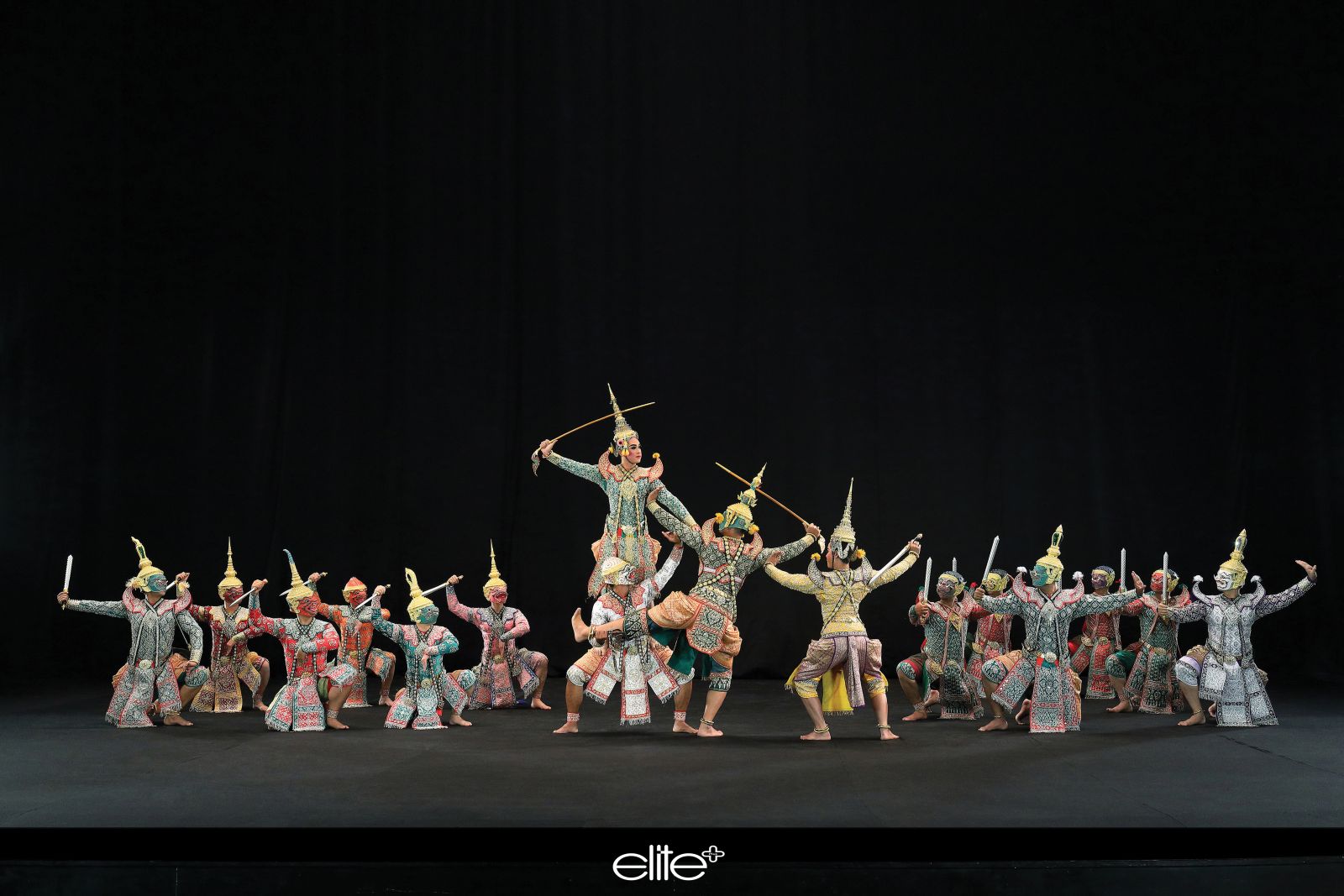
Khon Performance
The royal cremation will take place on the evening of October 26, with large-scale traditional Thai performances at the funeral to pay respect to HM the late King. One of most anticipated is khon, traditional Thai masked dance. The khon performance during the royal cremation has a special name known as Khon Na Fai, or khon performance in front of the fire (cremation), or Khon Na Phra Men, which means khon performance in front of Phra Merumat, or royal crematorium.
It is tradition to have khon performances during the royal cremation to show respect to the late King.The performance is usually based on the Ramayana, an ancient epic about Phra Ram, a Hindu deityreincarnated to rule a kingdom and fight against evil. For the forthcoming royal cremation, there will be a khon performance on October 26, starting from the evening until 5am the following day, involving a reported 1,200 classical Thai performers, and the production will be supervised by national artists of traditional performing arts.


